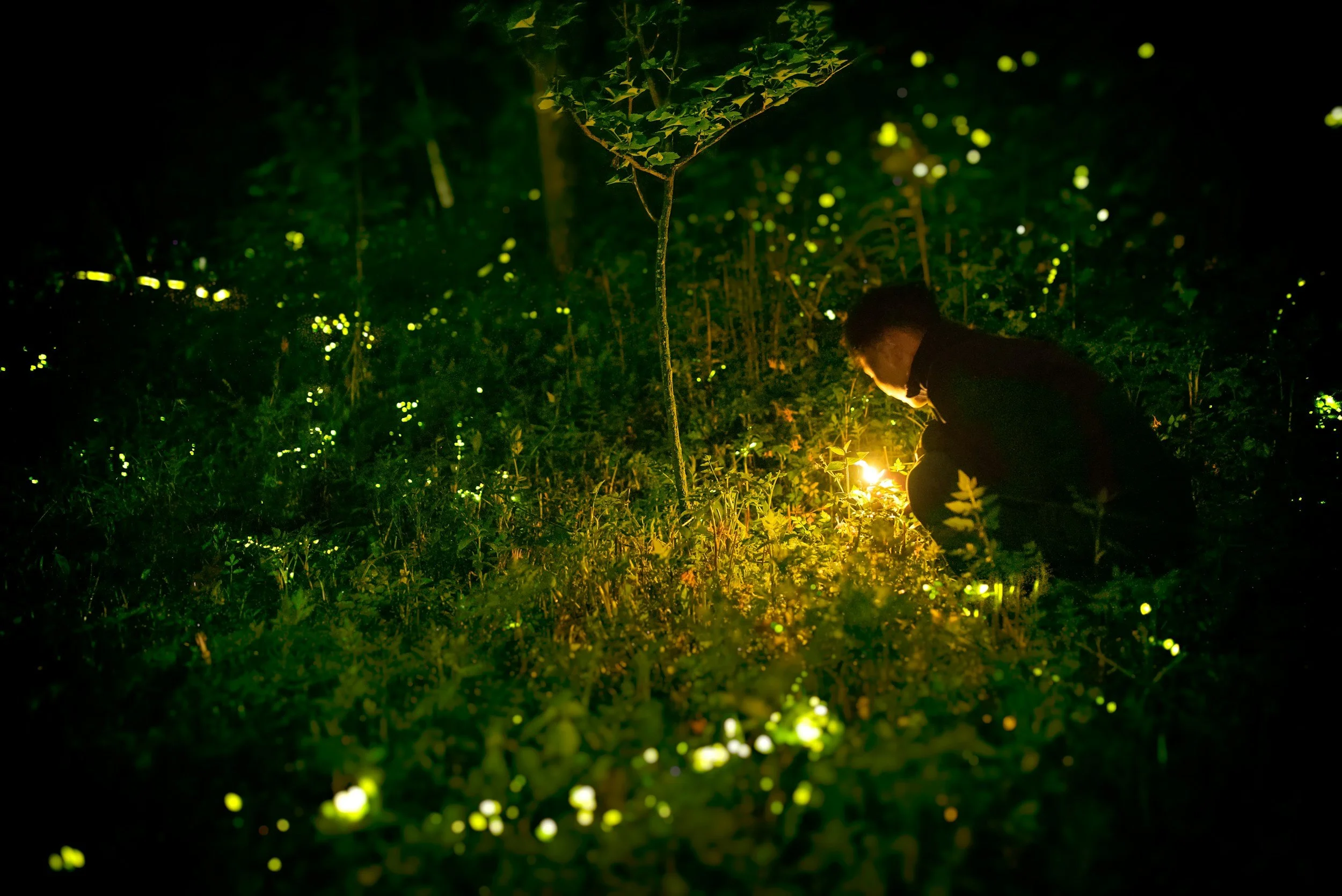Fireflies : Bioindicators of Nature’s health
Image courtesy : @ Jerry Zhang
Do you remember the last time when you saw fireflies? "Jugnu" as we call them, were equivalent to stars for me in childhood. While playing near our ancestral home in a small village of Uttar Pradesh, I would watch these jugnus with my cousins while referring to them as "stars descending on earth". Perhaps the romanticism attached to these harmless beauties never allowed us to be afraid of darkness of night while we slept on the roof of the house. People used to count sheep, while we cousins competed over who counted maximum jugnus and would blissfully and gleefully drift into slumber.
Anyone familiar with the word jugnu would be surprised to know that globally there are over 2000 species of fireflies.
They all "blink " the same right? No ! The frequency of blink and the color apart from other things make fireflies different. India contributes to approximately 5% of these global diversity as of now. These creatures are still being discovered and are being classified which is surprising as being glamorous and fascinating yet many of them might be living in oblivion.
Do all species of fireflies produce light? No! Scientists have discovered that the fireflies flash for various purposes but it’s a recent evolutionary phenomenon. Like other insects, fireflies use pheromones for mating and communication. Bioluminescence is also not a uniform feature across all fireflies; meaning many of the “fireflies don’t fire”.
But what all is needed for giving out light? When we see the night sky, the tar lights seem very attractive and cool to watch but it produces heat. So how come this little bug is not flaring up by light? The light production is an exothermic reaction but the firefly light is often called “cold light”. This is because most of the energy is given as light and very little as “heat”. The outcome of light is a long chemical reaction in this tiny wonder. Oxidation of a luciferin found in firefly with oxygen and catalyzed by enzyme luciferase result in production of light. Probably this light is a blessing and a boon for the firefly.
Many people say that there are so many fireflies, that means they must be surviving and thriving well. Perhaps every citizen should pause and reflect that when was the last time, he/she saw fireflies? Probably somewhere near the jungle while camping? Or with some naturalists on a walk inside jungle during an event? The thing is - fireflies dancing in complete darkness is wonderful but where exactly is complete darkness? Nightlight is increasing tremendously. Cities like Tokyo, Japan, present excessive streetlights and neon signs which disrupt firefly activity. Growing urban light pollution has led to reduced firefly sightings across globe. Although nightlight is a major threat, but habitat loss is still considered the biggest threat for firefly population. Malaysia observed that the loss of wetlands and mangroves habitat has negatively impacted firefly population. While we are ok to have host plants for butterflies in our garden, fireflies need a more intact ecosystem. They can indicate the health of soil, water, and air by their mere presence. But in a world of fast depleting wetland and mangrove, the population of firefly also seem to be in peril.
Uttarakhand is a wonderful state which has plethora of biodiversity and enthusiasts who always contribute in citizen science. Let’s come together to monitor, assess and know these “sparkle of fireflies”. Do comment about your experience of observing them and where!
A short poem on fireflies “Blinking life!!!” written by me -
“We have torch of our own
Helping you at times to find your way home
Dark is the time when you can meet me most
When I am ornamenting tree as a return gift for the host
It’s a pigment in me which makes me blink
Luciferin it is what else did u think?
This light we flash to signal the female
She responds slower in agreement to be my mate
My offspring prefer earth
Appetizing on worms and slugs in mirth
But off late we are not found much
Some says pesticide is causing slugs dearth
Also, the bright light you human’s use
The location of my low blinking mates is hard to deduce
Guess in few years we will be lost forever
God’ s miraculous disco light you will see never”
